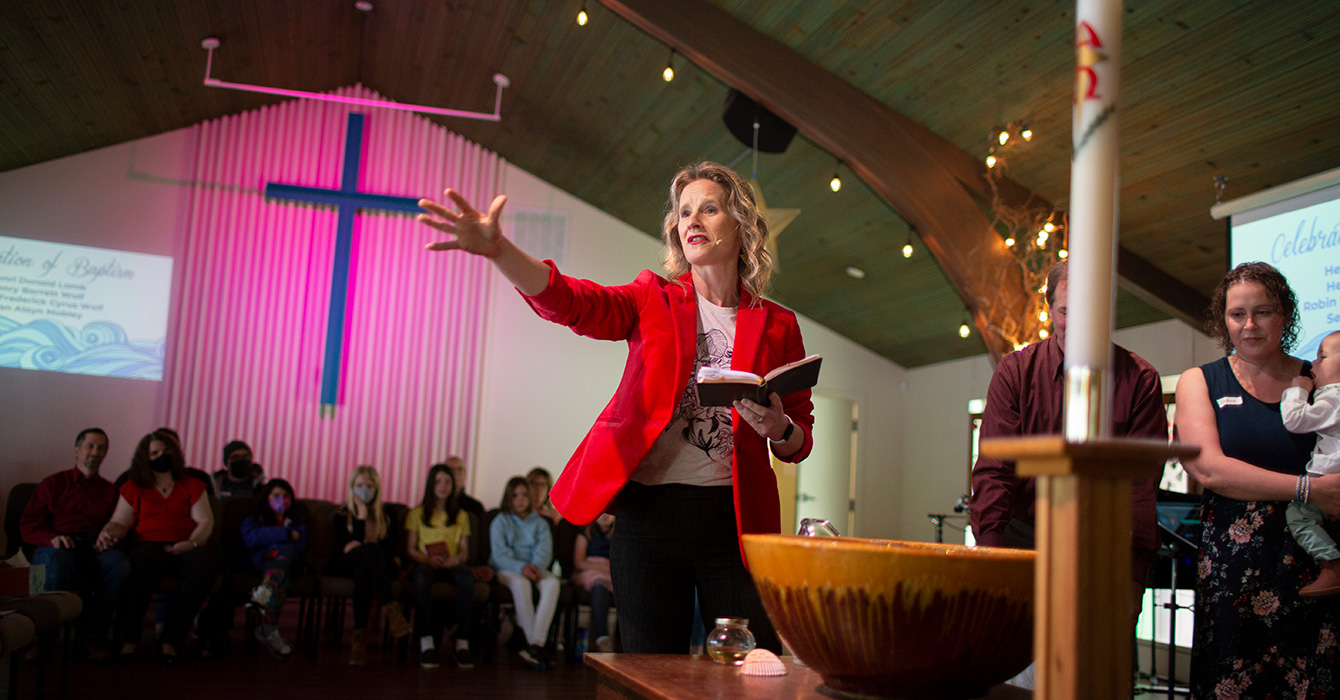
Church buildings are holy spaces. Within these buildings we enact rituals to commemorate the most meaningful events on our Christian journey: baptism, marriage and death. We use these sacred structures to offer praise and honor to God. Today, however, American congregations often spend large percentages of their financial resources to design and maintain property that is used only a few hours each week. As these structures age, the cost to maintain them soars. If membership growth plateaus, the funds to preserve these buildings may gradually recede.
Throughout the pandemic, many churches transitioned to completely virtual worship. On Sundays, our beloved buildings were basically empty, except for pastoral staff and essential media and worship volunteers. Although many of us have returned to in-person worship, even the most vibrant congregations have not fully rebounded to their pre-pandemic attendance numbers. Many churches that once offered three or more Sunday services can now comfortably serve attendees with one or two services.
The shift in how we use our buildings today only accentuates the need to address a question some churches were asking before the pandemic: What should we do with aging, expensive buildings that are not used to their full potential?
The faithful answer to this question cannot be discovered with a purely financial or pragmatic approach. Rethinking how we use our buildings, and discerning how much space we actually need, requires us to ask questions that look forward: What is our vision for ministry? How can our facilities help the church serve God’s kingdom? What big, bold idea will we pursue to help us embody the gospel of Jesus Christ?
Maybe we need more space, but it is also possible that we need less space or differently configured space to do what God is calling us to do. The one thing we do know is that doing nothing with our aging buildings is not good stewardship, and it is a missed opportunity for ministry.
Resources
How to plan for the post-pandemic future of church buildings
By Chris Elisara and Rick Reinhard
Minnesota church flipper gives empty religious buildings new life
By Jean Hopfensperger
A tiny congregation with a big building is resurrected as a center for peace
By Patricia Corrigan
Before you go…
In all four churches I have served, the church completed a construction project of one kind or another. My current church renovated our sanctuary. Instead of making the space look like a better version of the past, we decided to look forward. We could have reupholstered the pews. Instead, we decided to remove the pews and incorporate theater seating. We thought about our mission when we made this choice: The sanctuary is now designed to function as a performing arts venue that we can use to nurture new partnerships and invite new people, all for the sake of the gospel.
Of course, our approach is not going to work for every church. Nor does it need to. What’s most important is that we ask big questions and dare to dream of bold answers.
You can always reach me and the Alban Weekly team at alban@duke.edu. Until next week, keep leading boldly!
Prince Rivers
Editor, Alban at Duke Divinity





